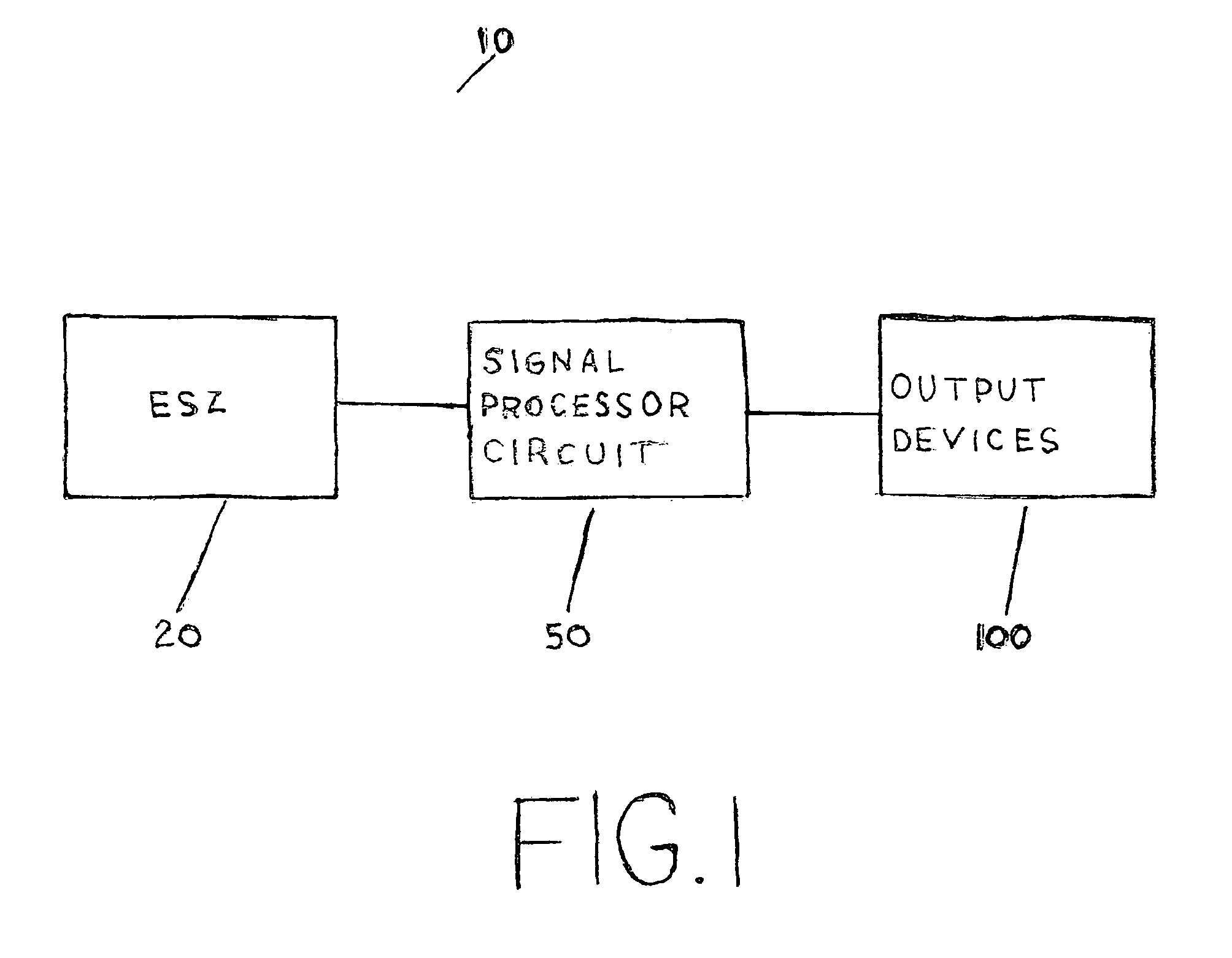Method and apparatus for particle counting and size measurement
a particle and size measurement technology, applied in the field of particle size measurement methods and apparatuses, can solve the problems of loss of sensitivity, esz method comparatively low sensitivity to submicrometer particles due to a multiplicity of noise sources, and magnified deleterious effects of noise in esz instruments, so as to achieve accurate measurement of particles
- Summary
- Abstract
- Description
- Claims
- Application Information
AI Technical Summary
Benefits of technology
Problems solved by technology
Method used
Image
Examples
Embodiment Construction
[0088]Referring now to the drawings, where the present invention is generally referred to with numeral 10, it can be observed that it basically includes an electrical sensing zone (ESZ) assembly 20 and signal processor 50 and output devices 100, as shown in FIG. 1.
[0089]ESZ assembly 20 is shown in FIG. 2 in general terms. Assembly 20 includes electrical current-carrying aperture 18 immersed in an electrolyte with controlled concentration. In FIG. 1A, ESZ assembly 20 is shown with current carrying aperture 18 with a tapered inlet 17 and outlet 19 immersed in an electrolyte with controlled concentration. As best seen in FIG. 5, in the preferred embodiment, aperture 18 has tapered outlet 19. Inlet 17 of aperture 18 has a predetermined diameter. Aperture 18 has a length of at least 30 micrometers and it is immersed in an electrolyte solution 21 with particle 22 of at least one size. Solution 21 passes through aperture 18. Vacuum or pressure means 14 causes solution 21 to pass through ap...
PUM
 Login to View More
Login to View More Abstract
Description
Claims
Application Information
 Login to View More
Login to View More - R&D
- Intellectual Property
- Life Sciences
- Materials
- Tech Scout
- Unparalleled Data Quality
- Higher Quality Content
- 60% Fewer Hallucinations
Browse by: Latest US Patents, China's latest patents, Technical Efficacy Thesaurus, Application Domain, Technology Topic, Popular Technical Reports.
© 2025 PatSnap. All rights reserved.Legal|Privacy policy|Modern Slavery Act Transparency Statement|Sitemap|About US| Contact US: help@patsnap.com



